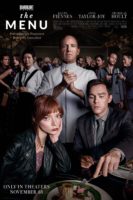Recently, I watched the movie “The Menu.” I loved it: I saw bits of myself in a few of the characters on either side of the pass. Here is a short synopsis of the film: an ultra-exclusive restaurant prepares a special menu for a select clientele. Essentially, “The Menu” is a horror/comedy/satire piece on the fine dining experience. Between this movie, other recent stories spilling secrets on the culture of restaurant work, and the recent announcement of Noma’s impending closure (Noma is a many-times named Best Restaurant in the World and is planning to close in 2024), some have started calling for the end of fine dining, whatever that means. The issue for many is the impression that all fine dining restaurants are hyper-competitive, intense, toxic workplaces that can destroy people. Though those accusations are damning, the idea of “free labor” was the final straw. In some high-profile places, like Noma, talented and ambitious cooks are hired, but not paid. According to “The Sorcerer’s Apprentices” by Lisa Abend (a book about the now-shuttered restaurant named el Bulli), the cooks are paired with a host family and generally they eat at the restaurant (the “family meal”). My view has been these types of positions are for a special few, and the sacrifice is repaid through contacts made and through future earnings. Generally, these types of situations are only found at high-end places, but the pressures and expectations can find their way to “regular” establishments. You might have dined in a place that suffers from the same problems, even here in Mid-Missouri.
Essentially, “The Menu” is a horror/comedy/satire piece on the fine dining experience. Between this movie, other recent stories spilling secrets on the culture of restaurant work, and the recent announcement of Noma’s impending closure (Noma is a many-times named Best Restaurant in the World and is planning to close in 2024), some have started calling for the end of fine dining, whatever that means. The issue for many is the impression that all fine dining restaurants are hyper-competitive, intense, toxic workplaces that can destroy people. Though those accusations are damning, the idea of “free labor” was the final straw. In some high-profile places, like Noma, talented and ambitious cooks are hired, but not paid. According to “The Sorcerer’s Apprentices” by Lisa Abend (a book about the now-shuttered restaurant named el Bulli), the cooks are paired with a host family and generally they eat at the restaurant (the “family meal”). My view has been these types of positions are for a special few, and the sacrifice is repaid through contacts made and through future earnings. Generally, these types of situations are only found at high-end places, but the pressures and expectations can find their way to “regular” establishments. You might have dined in a place that suffers from the same problems, even here in Mid-Missouri.
This brings me to the real subject at hand: “Noma 2.0” by Rene Redzepi, Mette Soberg, and Junichi Takahashi. “Noma 2.0” is dedicated to the history of Noma. It’s a celebration of the food currently created there and a recognition of some of the influences of what the restaurant has become. This is not your average cookbook. In fact, one could hardly even call it a cookbook. The dishes are given the stage and put on display, but the instructions are merely an afterthought. There is an addendum that gives the bare bones information on how to make the pieces of the dishes. If you really must get the recipes, there is a QR Code that directs you to the Noma website where you can find them (after answering a question, the answer of which is found in the book). This book is a statement, not a conversation. No, maybe it’s a clue to a mystery you didn’t know you needed to solve.
Rene Redzepi is the chef-owner of the soon-to-be-closing restaurant, and Noma shows off what he and his staff can do. Whereas the goal of a cookbook is usually to teach and guide the reader to recreate dishes, “Noma 2.0” does not attempt that. Like the dishes in “The Menu,” these are not plates the reader is likely to be able to recreate. Some of the knocks on cookbooks written by top-tier chefs are the scarcity of ingredients and complicated preparation techniques — “Noma 2.0” is no exception: I doubt reindeer penis (p. 147) will be readily available from my local butcher, for example. But, that’s kind of the point with Noma. The menu is focused on locally sourced and foraged items meant to highlight the entire cuisine of Denmark.
So, what can a reader get from a book like this? My stance has been to admire the creativity and treat these dishes more like temporal art than as a means for sustenance. Even if you can’t faithfully recreate a dish like Chocolate-Covered Moss, maybe you can approximate flavor and texture combinations? Maybe the plating can be an inspiration for your own creation. I mean, how can you not be inspired by a dish titled, Drunken Flower Pickle? Lastly, the almost deceptively simple names for the dishes sometimes feel insulting. The offense quickly dissipates once you spend a bit of time reading the steps taken to create these masterpieces. The photos are entrancing, each page pulls your head closer, hoping to find the secret to each creation. I am still in the midst of obsessing over the contents, and hopefully, you will be as inspired as I have been.
Image credit: Cyclonebill, Restaurant Noma via Flickr (license)


